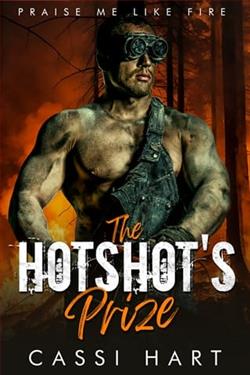Page 70 of Rest In Pink
“No, I would like to talk about Chapter Seven: The Writer.”
“Oh, god, not now,” Anemone said.
“Just write the paragraphs on the brownstone,” I said and settled in to do my rewrite. The writer was, if anything, an even bigger loss than the first four, but Anemone had picked up some very useful information about the publishing world during the two years she put up with him, so that was helpful.
At four, I collected Peri and headed for karate.
Chapter Thirty-One
I checked in with George and caught him up on what I’d found, speaking low enough that Bartlett couldn’t hear me from the next room, although he certainly tried. Then I drove to the ruins of the cardboard factory, since Rain had texted me she was going to finish there. Her Mercedes was parked just off the aptly named Factory Road. I pulled the Gladiator in front of her. We both got out.
“The museum was arson,” Rain said. “Your fire captain showed me. It was a good job. We wouldn’t have figured it for deliberate if we weren’t looking. The fire started in a fuse box, which happens sometimes. But we found what remained of a cell phone in the wall close to it. The perp, let’s name him Mickey Pitts, was able to remotely call the phone and cross two lines that caused a spark which ignited an accelerant paste which was injected in the wall. Brilliant.”
Rain sounded respectful of the crime. It went with the job. She had an opponent who was a challenge.
I focused on one part. “He set it off remotely?”
“Yes. Cell phone. So, he could be anywhere. He’d want to watch, though. Firebugs always do. The thing is,” Rain said, “he had to break into the museum to set that up. It would take a little time.”
“He’s been out for months,” I said. “He’s had time.” I nodded at the factory, a large brick enclosed expanse of what used to be the main industry of Burney. “No power to this place. The night this happened, there was a big storm. It was written off as a lightning strike. Olson told me that he’s rethought that in light of new evidence.”
Rain nodded. “He showed me, but I want to walk the area first. To get a feel.”
“Sure.”
She pulled a new set of over whites from her trunk, along with a fresh set of white sneakers. I figured she bought them on-line in bulk or the CPD had a better budget than Burney, which was not out of the realm of possibilities. I grabbed my stained coveralls that I used for every dirty job, including Liz’s car, and put them on.
Rain glanced at me and shook her head. “Really?”
“Really.”
We did the perimeter first and that took a while. The factory sprawled over the equivalent of three city blocks. There was a large asphalt parking area in the rear and the rusting hulks of a dozen long trailers were lined up near the loading dock. Their tires had rotted out years ago. Weeds filled the cracked pavement.
It took twenty minutes to walk the exterior, with nothing out of the ordinary noted. We went inside and were in what had been workspaces, full of scorched and partially melted machines. The roof in the middle was gone, but the brick walls of that area remained intact. Rain pointed to a set of metal stairs in a now exposed stairwell. We went up them and they continued to a large blue box on a platform.
“This must have been the foreman’s office,” Rain said.
The windows were gone but the openings still looked out over the factory. We were twenty feet up, just below where the second floor would have begun.
It was a bit overwhelming. The main interior walls had been brick and they were still standing. So were the steel beams that had held up the roof. Steel girders crisscrossed just above us. I thought there was something that could be salvaged of the place but it would require a lot of work.
There were several larger open areas with more rusting, burned out machines, the purpose of which, I had to assume, was to make cardboard. I probably should have gone to the Cardboard Museum before it burned down to learn the history of this.
Wide passageways, big enough for forklifts. But the place was a maze, befitting that book I’d read about the king who’d sent his tribute of youngsters into a labyrinth where there was a monster. I could see our monster, Mickey Pitts, spending time hiding out in here.
“I wonder why Cleve didn’t ship all the machinery to Mexico?” I said.
Rain shrugged. “Probably cheaper to buy new than ship the big stuff.”
She had a point. Eventually the venture in Mexico had failed, but not before the Blues grew their fortune. I thought of all the generations who’d worked here from when this was first built in Cleve’s grandfather’s day until Cleve moved it to Mexico. It had been their lives for years. Their retirement. Couples had met working here and started families. Cleve had pulled some sort of legal maneuver to wipe out everyone’s pension when he moved the factory. I was surprised a mob hadn’t gone up the hill with pitchforks and torches.
Rain pointed at a corner of the factory near the door for the loading dock. “Olson says the initiation point was over there.”
“It’s going to take a while for us to check this whole place,” I said.
“You got a hot date?”
I didn’t respond but led the way down the stairs. We decided to work clockwise from the center out. We walked, carefully avoiding the debris that littered the floor. It was a bit confusing at times, trying to figure out where we were, but we could always look up and get oriented using the platform we’d stood on. Finally, we arrived at what Olson had designated the initiation point.















